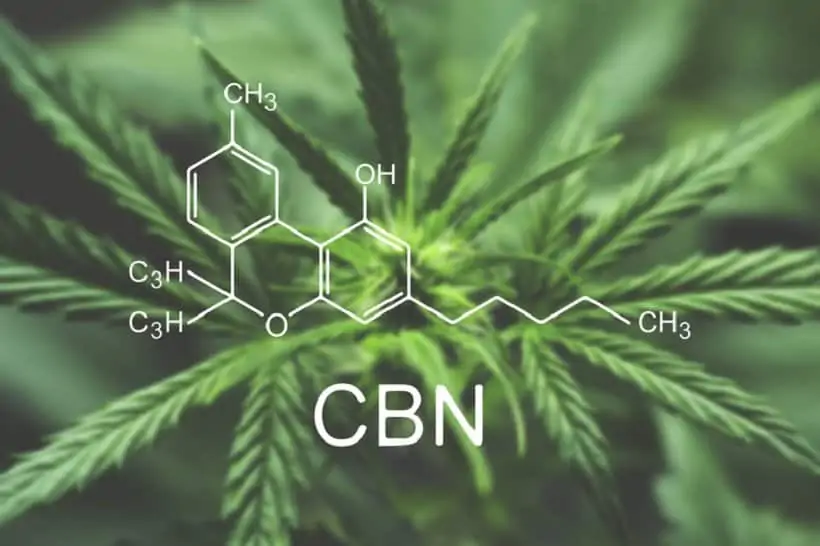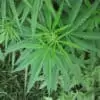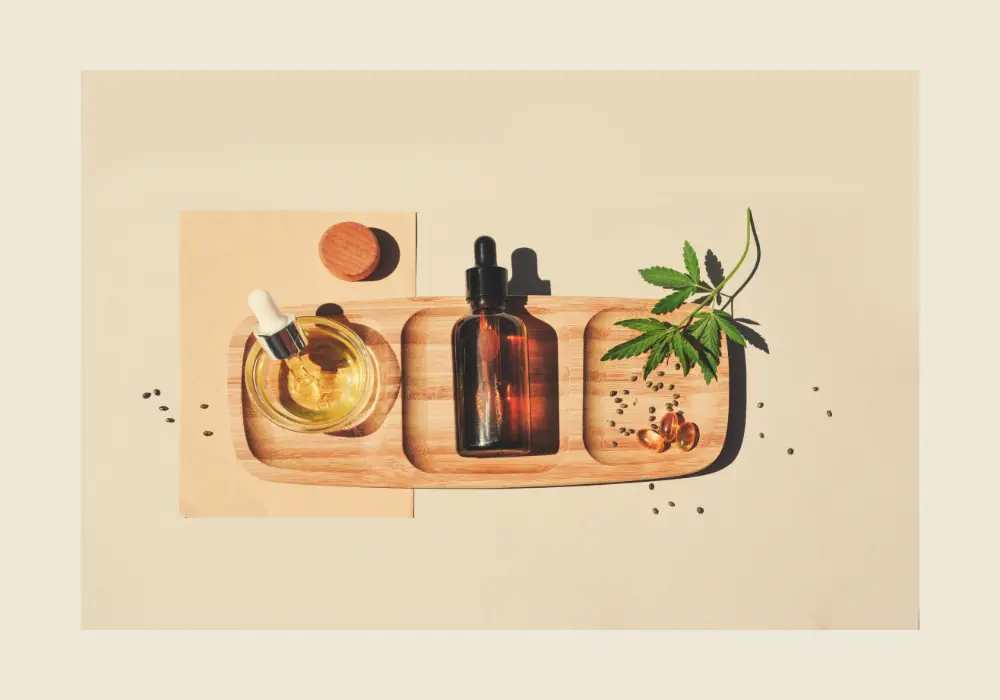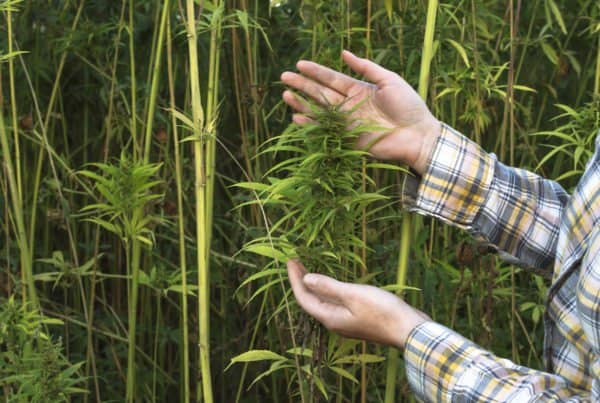TABLE OF CONTENTS
Let us look at CBN vs CBD so you better understand how each of these cannabinoids work. When you consume any cannabis product, whether by smoking, dabbing, vaping or eating, you consume different cannabinoids as well as terpenes.
Most cannabis products have a high concentration of THC and/or CBD along with a low percentage of minor cannabinoids, such as CBN, CBC, and CBG. These cannabinoids go into the bloodstream, no matter how they are consumed. They are circulated in the bloodstream, travel through the body and interact with endocannabinoid receptors that maintain internal homeostasis.
When cannabinoids reach the brain, they directly or indirectly interact with endocannabinoid receptors, a part of the body's endocannabinoid system, which produce various effects in the brain and throughout the body. Here is what you can expect from cannabinol (CBN) and cannabidiol (CBD).
CBN vs CBD: How Are They Similar and Different?
CBD and CBN are popular cannabinoids produced by the marijuana plant. In most cannabis plants, CBD and CBN concentrations are low. However, some growers have bred varieties of cannabis that have a CBD-forward chemical profile (up to around 20% CBD). CBN concentrations are usually under 1% but can reach 5%.
The main difference is the overall production of these two cannabinoids in the marijuana plant. Everything begins with the biosynthesis in the marijuana plant and the combination of chemical elements such as cannabigerolic acid (CBGA), which eventually produces CBCA, CBDA, and THCA.
These cannabinoids are the acidic forms of CBC, THC, and CBD. Decarboxylation is necessary to convert the cannabinoid acids into their parent compounds.
All of this happens while the marijuana plant is going through the growth phase before harvesting. After it is harvested, the plant material will be used for consumption. The effects of the weed strain are not felt if the acidic forms are not “activated”.
The acidic forms of the cannabinoids have to first be converted to feel that high associated with THC in a process called decarboxylation. This can be done by heating up the marijuana. Heating can occur when smoking or vaporizing bud, dabbing concentrates, or cooking/baking marijuana. Exposure to heat, light, and air can also speed up the conversion process.
Converting THC to CBN
When you decarboxylate the marijuana plant, the chemical bonds are broken down by the heat, allowing the acids to fall away and leaving the CBD, CBC, and THC. Therefore, the only way that you can access any form of CBD is through the decarboxylation process.
CBN is not the same as the acidic forms of cannabinoids. There are two ways that you can produce CBN that is found in marijuana plants. You can use the aging process and the decarboxylation process.
However, while decarboxylating, you will find that some of the THC will break down further and turn into CBN. The good thing is that this process of decarboxylation is quicker. The aging process is going to require more time.
THC in cannabis buds can naturally convert to CBN over time with exposure to light, heat, and air. As the buds become exposed to the elements, the THC undergoes an oxidation process and converts to CBN.
What Does CBN Do?
Cannabinol is found in very small quantities in the cannabis plant. However, preliminary research suggests it may have several therapeutic benefits. CBN has been shown to have analgesic, anti-inflammatory, appetite-stimulating, anti-epileptic, and antibiotic properties. It may also treat glaucoma and reduce cancer cell growth.
CBN will not produce an intense high like THC. However, it may produce a mild intoxicating high compared to the high of THC. Some users have claimed it has sedative properties, which may be helpful for people who have trouble falling and staying asleep.
Since research into CBN is still in its early stages, there is not much information about CBN’s adverse effects. Its potentially sedative properties can affect your alertness.
What Does CBD Do?
Cannabidiol is the second most common cannabinoid in the cannabis plant, right behind delta-9 tetrahydrocannabinol (THC). CBD does not produce a high. Instead, it may produce feelings of relaxation. It shares many of the same therapeutic effects as THC.
Many users have used CBD to treat several conditions and symptoms, including anxiety, pain, inflammation, nausea, gastrointestinal issues, autoimmune disorders, epilepsy, cancer, and so much more. Still, more scientific research is needed to back up its health claims.
CBD is usually safe to consume but may have some mild adverse effects, such as drowsiness, diarrhea, and weight/appetite issues. CBD may also interact with medications. Consult with your physician to determine if CBD or CBN is right for you.
How Do You Consume CBD and CBN?
CBD is available in a wide range of products, including gummies, capsules, patches, topicals, tinctures, vape pens, and extracts. CBN is not as commonly sold but may be found in cannabis oils, tinctures, pills, vape pens, and isolate products. If you are new to cannabis products, begin with a low dose of CBD or CBN and slowly increase the dose over time to find the right relief.
Since CBN products are not as widely available, they tend to be sold at a higher price than CBD products. CBN production must also undergo a special extraction process to produce CBN isolate products, adding to the final price.
CBN and CBD Legality
CBD was legalized by the 2018 Farm Bill. Under the new law, hemp products could be produced as long as they contained less than 0.3% THC. If hemp had THC levels higher than 0.3%, it would be considered federally illegal.
CBN is not directly listed in the scheduled controlled substances. CBN derived from cannabis plants is considered federally illegal. CBN derived from hemp is not considered federally illegal.
The Entourage Effect
Many users may not need to choose between CBN or CBD products. Research shows that chemical interactions between active compounds in cannabis can produce a synergistic effect, known as the entourage effect. Taking the compounds together may be more beneficial than using them alone.
“
There are over 300,000 jobs in the cannabis industry. CTU trained me for one of them!

Makes $24.50 @ THC +
Final Thoughts on CBN vs CBD
CBD and CBN share many similarities in their effects and psychoactivity. CBD doesn’t produce a high while CBN may offer a subtle high. Studies on CBD are more common than CBN studies, creating a smaller market for CBN products. Each cannabinoid has its advantages and disadvantages. Consult with your doctor before using any CBD or CBN products.
Both of these cannabinoids have been used as effective treatment methods for a wide range of conditions. CBN and CBD clinical research is in its infancy. For now, consumers should tread carefully when using any cannabis products and be aware of any potential adverse effects and medication interactions.
Enroll in Online Cannabis Industry Training
If you want to learn more about CBN vs CBD and other chemical compounds in the cannabis plant, enroll in Cannabis Training University's cannabis education program.

Fred Hernandez
Fred Hernandez is a highly accomplished and versatile writer, boasting an extensive background in the cannabis industry. With an in-depth understanding of various sectors including cultivators, processors, retailers, and brands, Fred's expertise spans across the entire cannabis landscape. As a prominent contributor to CTU, he consistently delivers insightful articles exploring the latest developments, news, and regulations shaping the cannabis industry. Whether it's delving into the intricacies of cannabis products, cannabis strain reviews, or providing comprehensive analyses of cannabis laws, or sharing expert insights on cannabis cultivation techniques, Fred's wealth of knowledge positions him as an invaluable writer and educator for all cannabis-related subjects.












 Jeff was involved in an accident where he endured a traumatic brain injury. He had a week-long stay in ICU where brain surgeons
Jeff was involved in an accident where he endured a traumatic brain injury. He had a week-long stay in ICU where brain surgeons  100% risk free money back guarantee within 48 hours after purchase if student has not completed any of the courses or exams.
100% risk free money back guarantee within 48 hours after purchase if student has not completed any of the courses or exams.